The winter in Pakistan is short, and the few pleasant weeks at the end of February and the beginning of March mark the small window of spring that most parts of the country receive. But spring does not just bring flowers, vacations and a small period of respite before the sun properly descends and the unforgiving summer hits.
It brings with it lawn mania. In 2016, a video went viral of a sale at Sapphire, a major women’s lawn clothing brand, in which two customers were entangled in a brawl over a lawn suit that was on sale. In places like the United Sales, mega sales and events like Black Friday make such videos commonplace. In Pakistan, most people are used to these fights happening at weddings over food or between political workers at their leaders’ birthdays over cake. This was something new, because it happened at a store that caters to the upper-middle class.
As unfortunate as the incident was, it did jolt a lot of Pakistanis into a realisation – that the lawn business is a juggernaut. Lawn has been around in Pakistan since before Partition. The cloth itself is ideal for the climate, and has over generations become the go-to material for traditional clothing. While textile manufacturers like Gul Ahmed have been around since the early 1950s, it has only been in the past two decades that branded lawn with around the year collections have become a major part of how Pakistanis shop for clothes.
Lawn is unique in this sense. It haccording tosevered for nearly a century in Pakistan but has remained a very distinctly Pakistani product. In fact, the only other country where lawn is a ‘craze’ if not a necessity (as it very much is in Pakistan), is neighbouring India. With a similar climate and general dress code, India is an obvious market for Pakistan to export a rare product that is branded, local, and a Pakistani speciality.
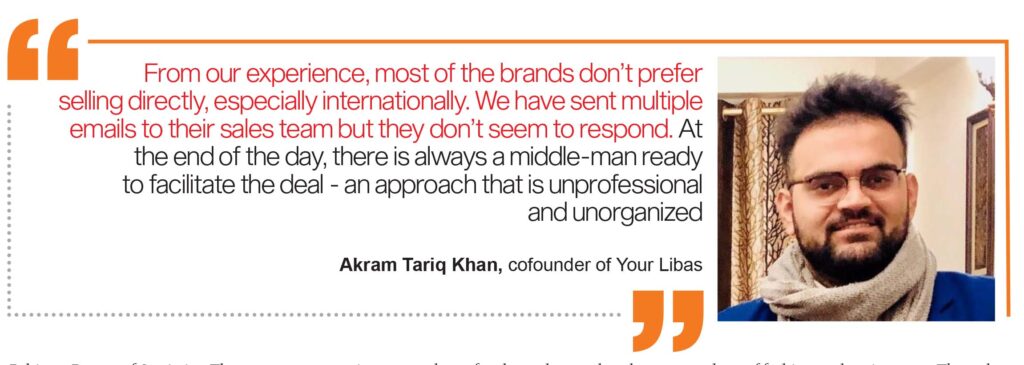
In the past, Pakistan has exported lawn to India. Up until 2017, Pakistani fabric and brands were showcased in India during the Alishan Pakistan fair and Indian models and actresses were often models for Pakistani lawn suits and brands. Even now, Pakistani lawn continues to be a highly desired product in India and sells well. This is all despite the fact that Pakistani lawn brands do not seem to care at all about the potentially enormous market across the border. Here is what they may be missing.
Why lawn?
Pakistan and India are probably the only places where lawn fabric is popular, even though the material originates from the the French city of Laon, where the fabric first came into being and gets its name from. It was a light, sheer cloth with a close weave that was breathable and used to make skirts, childrens’ clothes and handkerchiefs.
In the late 19th and early 20th century, when the British Raj was at its height, the British were fascinated by all things Indian. Among the vast array of Indian products that became a source of occidental fascination were the embroidered and block printed traditional clothes worn by the Mughals, that to Europeans would come to be known as chintz. Since India, and particularly the Punjab, were large cotton growing areas, the British decided to start manufacturing lawn cloth in India. Lawn was the perfect material to be worn in the Indian subcontinent, light yet closely woven so not revealing, and very breathable.
Like all other cloth, lawn can be dyed as well and given different colours. However, what was soon discovered was that the fabric waccording tofect not just for dying and block printing, but also for embroidery. You could make elaborate embroidery designs on the cloth without harming the fabric’s structural integrity, and soon the British obsession with chintz and the newfound versatility of lawn gave birth to the bright, colourful, and full of patterns lawn clothes that we know today.
When the subcontinent was partitioned in 1947, most of the lawn production units that had been setup were on the Pakistani side of the lines drawn by Sir Cyril Radcliffe. In the immediate aftermath of Partition, when Pakistanis would travel to the Indian side of the border, many would frequently be asked by people in India if they were willing to sell them lawn, and for the first two years after Partition, lawn continued to sell in Indian markets like it always had.
But then came Pakistan’s disastrous decision to not devalue its currency in tandem with India and the UK, which meant that Pakistani products suddenly became more expensive, and thus uncompetitive in the Indian market. Add in the aftermath of the 1965 war, when Pakistan and India dramatically curtailed bilateral trade, and the market for lawn in post-Partition India shriveled to nothing.
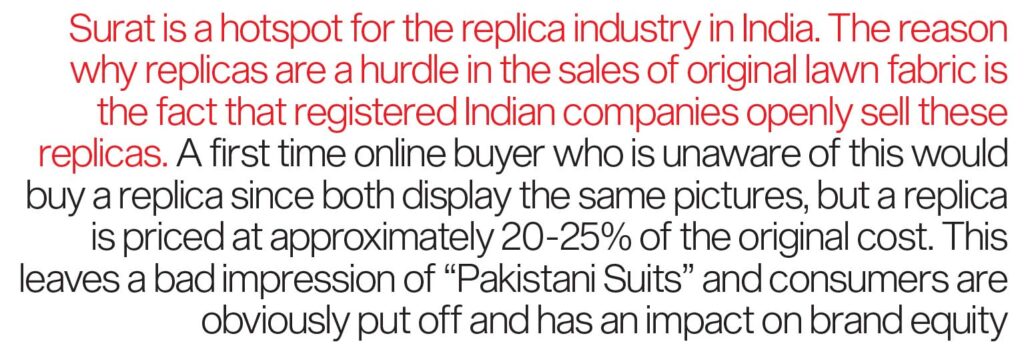
While Indians soon forgot about lawn cloth, in Pakistan, factories continued to produce it and local demand continued to grow. This resulted in industries like Gul Ahmed setting up in 1953 and producing bright lawn cloth that could then be sent out for wholesale, and bought from shops and then given to tailors for stitching.
Other textile millers also caught in on the action, and the lawn business grew lucrative. For a long time, this is how the lawn business continued to grow. Yes, the branding process had already started and some manufacturers sold better and at higher prices than others, but lawn was bought at shopping centers and local cloth shops.
There were no collections, or models on billboards posing in the latest designed lawn suits. The producers would sell to boutiques which would sell under brand names like Gul Ahmed, Sitara Sapna, Jubilee lawn, and others. This continued on until at least the late 1990s. It was then that something big happened: Pakistani women began to enter the labour force outside their homes in large numbers, and with that they gained both the need to purchase work clothes, and the financial wherewithal to buy them.
Pakistani women are earning more money, have more disposable income at hand, and have access to social media that helps them discern between low and high quality products.
The data on Pakistani women’s rising economic power is staggering. The female labour force participation rate rose from under 16% in 1998 to a peak of 25% in 2015 before declining slightly once again to 22.8% by 2018. That means there are millions of women who are currently working who might not have been, had labour force participation rates for women stayed the same.
The total number of women in Pakistan’s labour force – earning a wage outside the home – rose from just 8.2 million women in 1998 to an estimated 23.7 million by 2020, according to Profit’s analysis of data from the Pakistan Bureau of Statistics. That represents an average increase of 4.9% per year compared to an average of just a 2.4% per year increase in the total population. In short, the growth in the number of women entering the labour force is more than twice as high as the total rate of population increase.
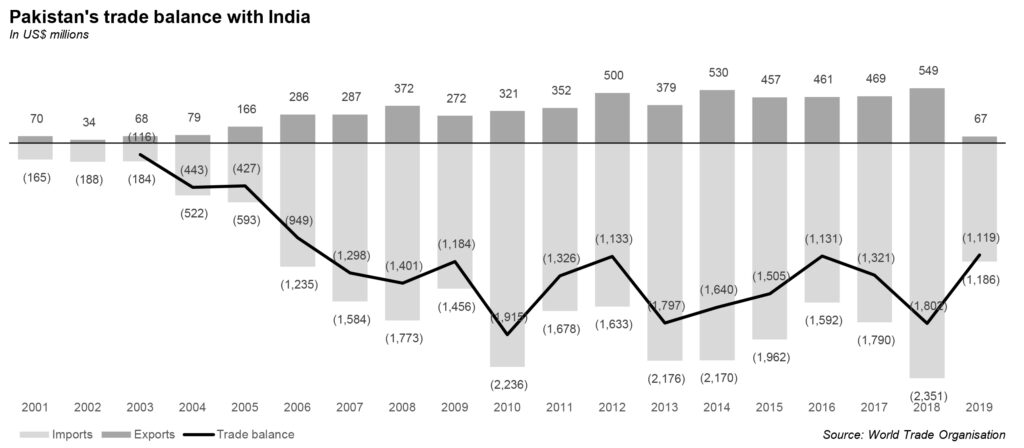
All of those women now in the workforce have more purchasing power than ever before. Women have always had some measure of purchasing discretion for their households. But now, with their own incomes, they have more ability than ever before to make discretionary purchases for themselves, rather than just making decisions for their households. That includes buying lawn clothing for themselves.
As this happened, a number of fashion designers were also coming up and either started their own brands of designer lawn, or were hired by manufacturers to design lawn for them. So now, lawn brands that were emerging were not just producing colourful fabrics and patterns, they were also making stitched clothes. This meant that lawn was being stitched in different styles that were going in and out of fashion at alarming rates. The styles of cuts and design meant to stay fashionable, people began buying and following these brands. More brands popped up, resulting in the current ‘lawn mania.’ This is where India comes in.
The India equation
In the early 2000s, even with the backdrop of the Kargil disaster and a military coup in Pakistan, the cultural exchange between India and Pakistan was at an all time high. Once again, a lot of this was thanks to cable television. Pakistani dramas would play in India, and Indian content would run here. Celebrities from both countries would work with each other, and with bilateral cricket still happening, there were opportunities for Indian manufacturers to advertise their products here and for Pakistani manufacturers to do the same in India.
While lawn had always been a big deal in Pakistan, as branded lawn became all the rage, the Indians grew curious. They saw Pakistani dramas in which actresses were wearing lawn suits and Pakistani models that were doing fashion shows for lawn designers.
Then, the Pakistani brands began hiring Indian celebrities like Kareena Kapoor to model their lawn suits. This meant the negligible demand for lawn in India saw a boom, and by the mid 2000s, lawn suits were brought into the mainstream Indian fashion market, and have since only seen a steady increase in popularity and demand. But even as Indians became accustomed to Pakistani lawn, a souring in diplomatic relations meant the supply chain would have to go out of its way to get Pakistani lawn into the India market.
Currently, the relationship between India and lawn is a curious one. India is one of the largest producers of cotton fiber in the world, with Pakistan not even coming close. However, they do not have specialised companies that know how to produce lawn, and neither do they have the designers that have now spent decades working with and designing lawn. Meanwhile, Pakistan is the biggest global producer of finished lawn fabric garments, and also has the relevant people that turn that fabric into fashionable clothing.
Now, when you are the largest producer of anything in the world, there will always be an export demand, no matter how big or small. Since lawn is very much a Pakistani phenomenon, Pakistan exports lawn to overseas Pakistanis. Once it goes here, overseas Indians also buy the lawn, and sometimes then sell it in India. This is because while lawn has become popular in India, Pakistani brands cannot just sell to Indian retailers. While Pakistan and India have often had bumpy relations, lately the terms have been far more severe.
As a result, trade between the two countries has been brought down to a significant extent. The drop in 2019, the latest full year for which data is available, has been particularly severe: Pakistani exports to India dropped from $549 million in 2018 to $67 million in 2019, a massive 88% decline.
The winner in all this are not consumers or retail businesses, but instead the middle men. Most Pakistani lawn suits make their way from Pakistan to India via Dubai. Middle men in Dubai purchase through wholesalers, and then sell ahead. What is interesting here is that some brands do have offices in Dubai themselves and yet do not try to sell directly.
Estimates suggest that the market size for Pakistani lawn suits is over INR 400 crore ($54 million), despite a not so smooth relationship with india. That is a testament to the fact that India, in addition to other countries where Pakistani and Indian diaspora reside, are definitely significant markets.
While speaking to Pakistani lawn retailers in India, Profit has uncovered that there is always a shortage of these lawn suits in India, especially because of supply chain issues. However, there may be more to the shortage such as artificial shortages to create fear of missing out (FOMO) to prop up sales.
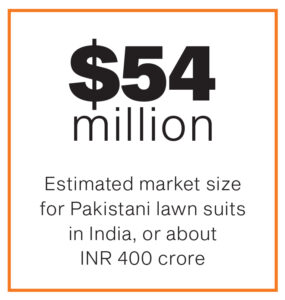
Consumers often complain about products running out-of-stock, specifically the popular designs and during new product launches. According to a source working at a leading Pakistani lawn brand office in Dubai, some brands use middle men to carry out these transactions for them considering the diplomatic relationship between the two countries.
“From our experience, most of the brands don’t prefer selling directly, especially internationally. We have sent multiple emails to their sales team but they don’t seem to respond,” says Akram Tariq Khan, cofounder of Your Libas, an Indian online marketplace for Pakistani suits and kurtis in India and the rest of the world. “At the end of the day, there is always a middle-man ready to facilitate the deal – an approach that is unprofessional and unorganized.”
This kind of complacency on the part of the brands, that have grown comfortable in their market share within Pakistan, resulted in Khan launching Your Libaas in 2014 as a startup when Aalishan Pakistan was discontinued and they realized that Indians still wanted to buy Pakistani lawn. What began as a small startup in New Delhi quickly transformed into a strong brand with an international presence.“Brands should be more responsive, especially where there is a significant market that runs the risk of being replaced by replicas posing as original Pakistani brands,” says Khan.
Moreover, he adds that for the sake of Your Libaas’s commercial success, they have planned to set up a company in the UAE and are soon setting up an operational base with the aim of tapping into the lucrative MENA region, so they can deal with brands and manufacturers directly.
Direct dealings in this market, as in other sectors, is fundamental to greater returns. Considering that one Indian rupee is worth 2.18 Pakistani Rupees, a PKR 7,000 suit should be worth INR 3,210. However, it is pertinent to note here that because of the extra middle men involved in what should be a seamless transaction, the cost of the suits go up drastically for Indian and international retailers. Khan explains that this is a reason behind the thriving replica market, which are a form of competition to businesses selling original lawn suits.
Akram, a 2017 graduate of Aligarh Muslim University in India, was born in Riyadh, Saudi Arabia, and created Your Libas in 2014. The company is headquartered out of New Delhi and markets Pakistani brands in India as “top UAE designers”. Need we explain why?
The replica business
Consider for a moment, the market for second hand watches. They are obsolete as a product, but people continue to pay ridiculous amounts of money for them. That is because they are not paying for the utility, they are paying for the craftsmanship, the story and the history of the product. But even the most expensive watches can be replicated, and much like them, lawn suits also have first, second, and third copies. So do sunglasses and so does furniture – any good brand will always have knock-offs.
Designers and their teams put in a lot of effort and months of planning to launch a collection, which the replica makers imitates and makes a neat buck off of. On this side of the border, it is a common site to walk into Karachi’s Gulf Market and find master replica suits of designs launched merely a few hours ago.
Name any brand and design, chances are that not only will you find it but will also be given a variety of pricing options based on how close to the original you want the replica to be. Some argue that designs and materials are leaked and therefore brands are losing out on money, whereas some believe that brands themselves release master replicas, first copy replicas, and second copy replicas in order to tap into a larger market and get a share of greater volumetric sales.
The situation in India is a step forward. While in Pakistan, the replica makers and sellers are infringing on the intellectual property of brands whilst selling lawn, Indian replica makers and sellers sell the same design but on Indian cotton fabric. For someone that does not know fabrics well enough, the difference is hardly apparent, nonetheless exists. However, any seasoned customer can easily make out an original from a replica, and simplet cotton fabric is not lawn fabric – that is the whole point.
Surat is a hotspot for the replica industry in India. The reason why replicas are a hurdle in the sales of original lawn fabric is the fact that registered Indian companies openly sell these replicas. A first time online buyer who is unaware of this would buy a replica since both display the same pictures, but a replica is priced at approximately 20-25% of the original cost. This leaves a bad impression of “Pakistani Suits” and consumers are obviously put off and has an impact on brand equity.
One interesting example of how big the replica industry is in India and how lawn obsessed Indians are is the emergence of a brand called Zara Hayaat. Zara Hayaat is a fake replica brand made in India that poses as a Pakistani designer to lure in Indian and international customers. Interestingly so, there is no designer named Zara Hayaat in Pakistan that has a lawn range. The fabrics are produced entirely in India, despite trying to depict a Pakistani image.

The owners of the company are based in India, the models for the shoots are neither Pakistani nor India, in addition to the fact that most of the lawn advertisements are shot in India. Interestingly enough, both zarahayaat.com and thefashionstation.in are hosted at the same server and Zara Hayaat’s facebook page is managed from India according to the page transparency section.
The fact that someone would go through an elaborate scheme to seem like a Pakistani brand whilst being in India is proof that there is a significant amount of potential if Pakistani brands were able to capture the Indian market.
The Pakistani brand’s loss is the Indian retailer’s win
While it makes sense that Pakistani brands may have some apprehensions whilst selling with India, it is rather unfortunate that they have not been able to develop strong supply chains around the world, especially in countries with large subcontinent diaspora. Websites like Your Libaas remain at the forefront of sales.
“We’ve been operational since 2014 and were the first website in India offering only original Pakistani Suits. These lawn suits are grossly overpriced on marketplaces like Amazon.”
Khan adds, “We provide multiple brands with easy accessibility, free shipping and easy returns on a single platform. Secondly, buying from brands directly isn’t a feasible option – The shipment might get stuck at customs, or it could end up being delayed otherwise. Even in a normal scenario, the delivery timelines will be longer than what a domestic player can offer. Close to 35% of our users are repeat buyers and this is a major pain point.”
While most lawn brands in Pakistan have started shipping abroad it is pertinent to note that they are often seen to be cancelling international orders, having trouble with exchanges and returns. As a result, consumers sometimes choose to buy from third party retailers like Your Libaas instead of the retailer themselves, sometimes even willing to pay extra for this convenience.
While Pakistani lawn suit sales may face ups and downs throughout the year as the relationship with India has its ups and downs, Pakistani brands need to expand their international presence and revamp their online operations to reach a larger number of individuals across the world.



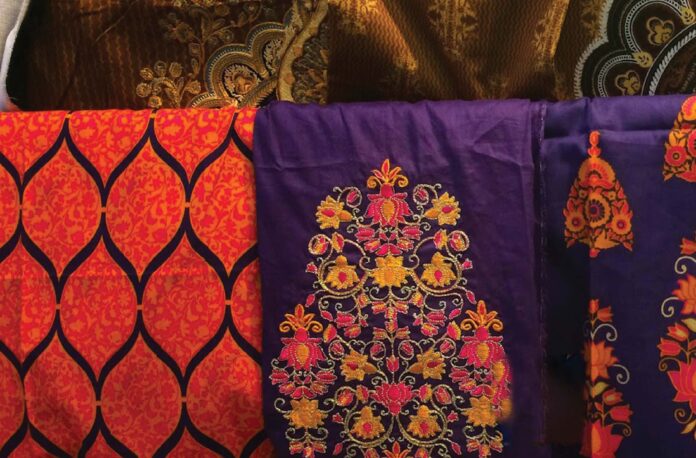






India is truly like a neighbor that does not recognize us as a son of his father, kills & plans daily killings of the fmly in our house & given a chance will enter our house to ransack & steal.
Wisdom & logic dictates we NEVER trade with him,unless it repents & stops killing our innocent women & children.
We are Shareek Brothers, No one in India have any grudge with any normal citizen of Pakistan. The grudge is mainly about its mistaken ideology about Islam and daily rant on Kashmir. Please ask your Miltablishment, its selected rulers to stop this irritating nonsense and control the ferocious toothbrush head animals constantly trying to jump the fence. 😀
Fuck off you black bastard. Who’s calling smelly urine drenched maggots as brother’s.
Don’t be abusing, it won’t serve you in anyway except increasing BP.
‘Brothers’, my foot. You guys do not even qualify as our servants. India is nothing but filth.
Your choice … get your DNA checked. 😆
Brothers?? You people are products of polygamy. You guys don’t even know who your real parents are. Better find who your father is and why your mum did not reveal your true father to you.
I pity on you and your ancestry when you refer this issue. Be at peace and forget your ancestral past. 😞
Doing business with India means sacrifice of ideology and strategic points. Indians wouldn’t welcome us with open arms if there was no significant strategic gains it will get. Rather we can focus on Turkey, North Africa, Malaysia and Indonesia. Focusing on business with India is not as easy as the writer makes us believe. India ties business with diplomacy. UAE, Saudi Arabia etc are examples.
Agreed & rightly point out , in fact “we always have the nice things with us but the vacuum is on other side “
Business is always where both parties gain. It is Pakistan’s choice to focus any market and Indians have no issue on it. You are incorrect Gina, it is not India but Pakistan which always brought strategic issues in trade. There is clear example of it for denying India trade route to Afghanistan and closure of LoC/ Border trade after 5th August, 2019 whereas India has nothing to do with Pakistan’s bilateral trade with other nations. It is only your presumption. 😀
Get lost. Nobody invited cow piss drinker here. You people smell awful and look ugly.
Read Sahih 1.234 and follow it in letter and spirit. 😆
I think ur losing ur brain,go suck on a camel dick u inbred terrorist
Chaddi ChaCha Endia is a shit hole. Build toilets first. Our products are niche and target only .01% of your population. Even that .1% is equivalent of poor of our country. Nobody cares about your country or your markets.
India has more toilets then bedrooms in Pakistan. Please check data or shall I provide it to you? 😆 Business is YOUR choice, nobody in India is also, so keen to have any Pakistani product.
Our Quaid had banged more indian women than you have ever seen in your life.
Agree with the above comments. Trade with India, albeit desirable, isn’t possible in the current circumstances. There are huge markets other than India. You only have to look at the huge diaspora of Pakistani, Indian, Bangladesh, Afghani all around the world. There are opportunities in the middle east, Africa, Iran and Turkey.
But yet again the Pakistani media talks about the “if only” the Indian market was open. No such talk emanates from across the border. They talk about how to screw over Pakistan at every opportunity. Take the examples of Basmati Rice and Pink Salt.
We need to think about Pakistan first and stop selling ourselves short on the Indian issue. They don’t care about us so why should we not focus on ourselves and look for alternatives.
I think trade with India is good but don’t forget other countries Muslim living in or Asian living in. I sell very good visit my site coshmere dot com
It would be wise for us to associate with MENA than South Asia. Culturally, religiously we are close. Focus on these markets and also a try for markets in Turkey, Indonesia, Iran etc. We have others to focus on rather India.
Traditional Pakistani suits are well in demand in India, especially among families migrated from West Pakistan. We hope sanity will prevail so as bilateral trade starts. 😀
You people have very wrong percetion about india
Sorry. No business with Pakistanis for obvious reasons. Only our Military will do business with your military. And I believe that business is very active.
And stop day dreaming and living in fantasy land. Hindus and Muslims can never be friends. Hindus will never accept Muslims. And no one can do anything about it. Get it straight.
we pakistanis are not afraid of fighting. for us it is life style. issue is that there are big Numbers of Hindus and almost same number of Muslims living in subcontinent which by default have to bear each other. by abusing or showing hatred for each other will not do good to any one. by this war mongering attitude only west will flourish by selling ammunition to us and we will be happy just being killed or killing each other. all humans are equal and they have to bear others as this life will finish soon and all bad deeds/karma will effect this and there after life. first of all please tolerate each other . do business or not is secondary issue.
True.